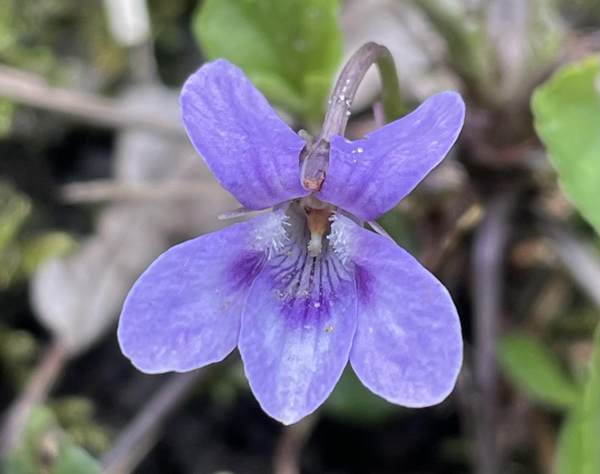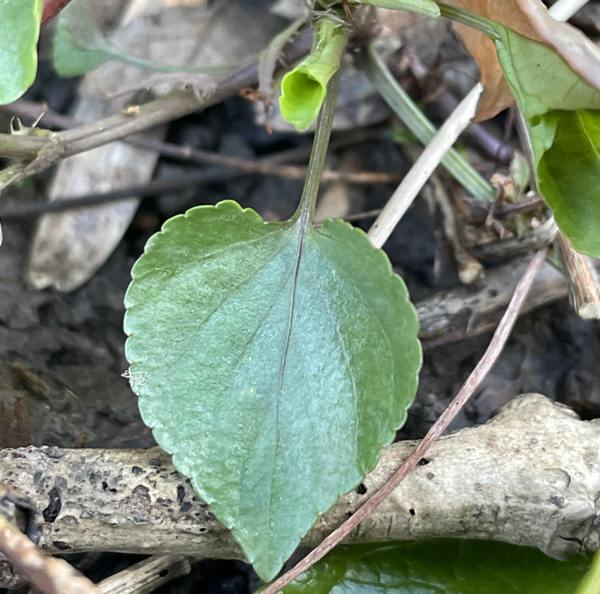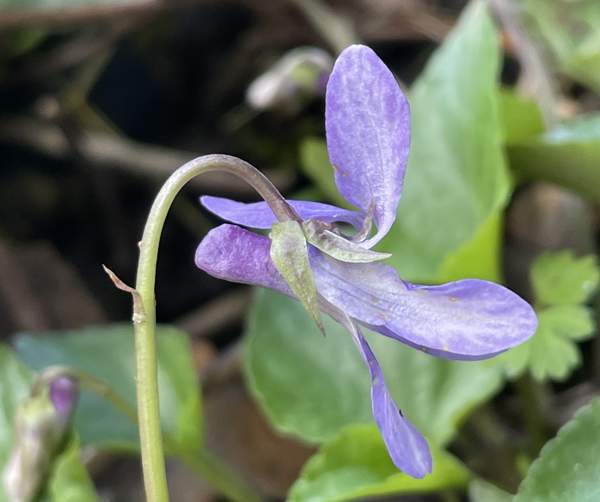Viola reichenbachiana - Early Dog-violet
Phylum: Magnoliophyta - Class: Equisetopsida - Order: Malpighiales - Family: Violaceae

Often mistaken for Common Dog-violets, these early scentless violets are less plentiful, especially in northern England and Scotland.
Description
The Early Dog-violet has long-stalked heart-shaped leaves, which are either hairless or only slightly downy.

Early Dog-violets produce flowers 15 to 20mm across which range in colour from blue to deep violet. This perennial plant spreads mainly by means of above-ground runners, which are referred to as as 'stolons' in botanical literature. The flowers have five petals backed by small pointed sepals.
A distinguishing feature of the Early Dog-violet is its flower spur, which is a darker violet than the petals and is neither notched nor furrowed towards its tip.

Habitat
Most commonly seen on roadside banks and woodland edges in chalk-rich areas, Early Dog-violets often nestle among other taller vegetation so that they are easy missed.
Distribution
The Early Dog-violet is fairly common throughout most of England and Wales but rather less common in Scotland; it is found also on mainland Europe, in North Africa and in parts of Asia.
Blooming times
In Britain and Ireland, Early Dog-violets (referred to as Dog-violets because they are scentless and were therefore considered as fit only for dogs) bloom chiefly from late February to May.
Uses
Fritillary butterflies make good use of the leaves of all kinds of wild pansies: these are their larval foodplants.
Similar species
Common Dog-violet Viola riviniana starts blooming slightly later in the year (but overlaps with many Early Dog-violets) and in the kinds of habitats that Early Dog-violets favour. A distinguishing feature of this species is its pale flower spurs that isare usually upturned and either furrowed or notched at their tips.
Sweet Violets Viola odorata, usually the first violet species we find in the wild in Britain, have downy stems and leaves; they grow in woods. As the name suggests, they have a strong and pleasant scent.
Acknowledgements
This page includes pictures kindly contributed by Liz Downey.
Sue Parker's latest ebook is a revised and enlarged second edition of the acclaimed Wildflowers in the Algarve - an introductory guide. Full details here...
Buy it for just £3.95 on Amazon...
Please Help Us: If you have found this information interesting and useful, please consider helping to keep First Nature online by making a small donation towards the web hosting and internet costs.
Any donations over and above the essential running costs will help support the conservation work of Plantlife, the Rivers Trust and charitable botanic gardens - as do author royalties and publisher proceeds from books by Pat and Sue.



